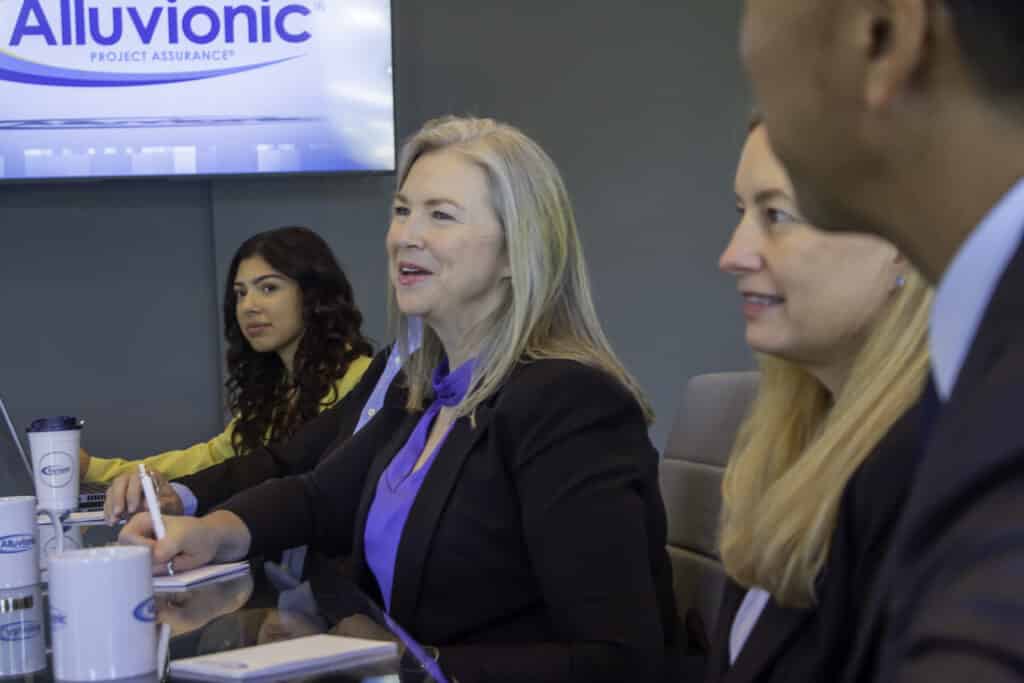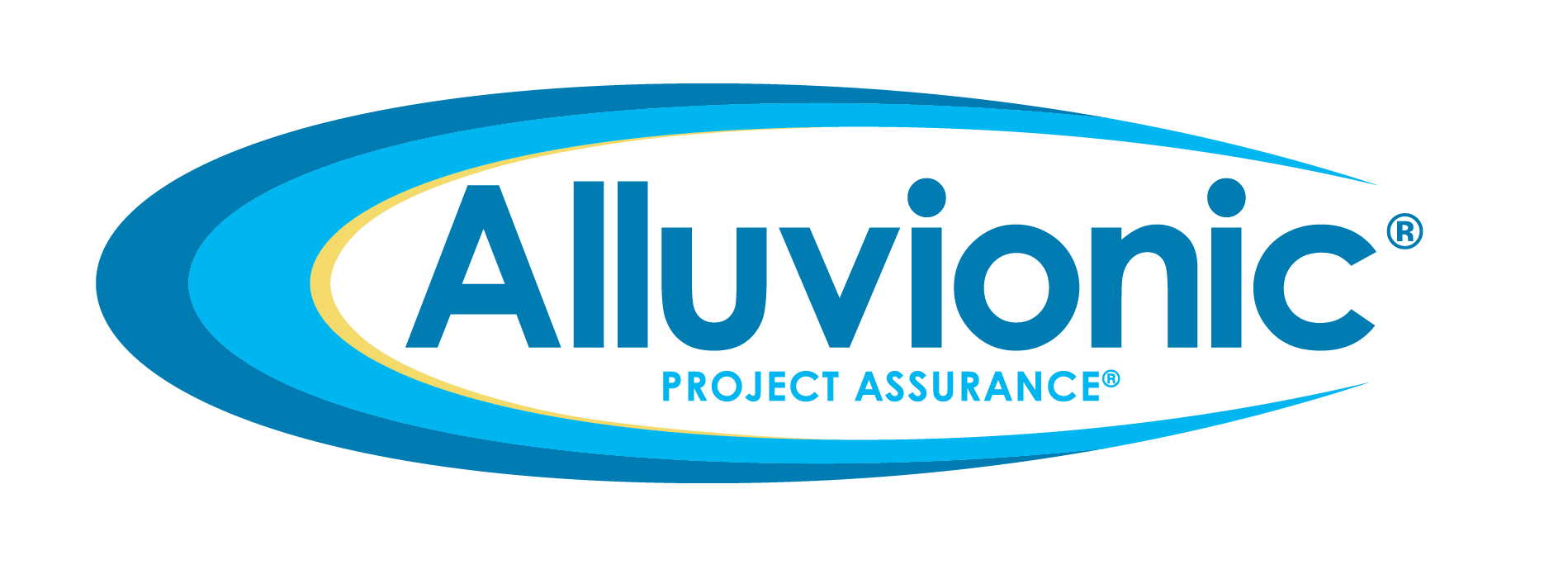Home » Process Improvement » ISO 9001 Certification Overview » ISO 9001 Certification Requirements
ISO 9001 Certification Requirements
Building a Robust Quality Management System (QMS) for Sustainable Growth
- To achieve ISO 9001 certification, organizations must build and maintain a Quality Management System (QMS) that meets the standard’s requirements.
You’ll need to show how you:
- Monitor customer satisfaction and product/service quality
- Conduct internal audits at planned intervals
- Use data to inform management reviews and corrective actions
Every person affecting quality must be competent. ISO requires you to:
- Define competency requirements for each role
- Maintain training records and competency assessments
- Provide ongoing learning to fill gaps
- We are ISO 9001 certified and bring decades of collective expertise to every project.
- ISO 9001 certification is a strategic advantage. With Alluvionic as your partner, you’ll build a QMS that aligns with your goals, grows with your business, and improves quality at every level.
- What makes our approach effective?
- We’re a Woman-Owned Business: Diversity in leadership drives fresh perspectives and agile solutions.
- We Focus on Real Change: As organizational change management experts, we build systems people actually use.
- We Deliver Sustainably: We help you go beyond certification with interim QMS health checks and maintenance support.
- We Tailor the Process: Your business is unique. Your QMS should be, too.
Avoid Costly Missteps & Meet ISO 9001 Requirements with Confidence
Understanding the Foundation of Quality Management
For organizations beginning their ISO 9001:2015 certification journey, knowing what’s required upfront helps avoid confusion and rework down the road. In addition to being a quality management standard, ISO 9001 is a business improvement framework. This guide unpacks the essential documentation, processes, and systems you’ll need to get started, along with foundational steps like defining your scope and engaging leadership.
Key ISO 9001 Requirements: Documentation, Processes, and Systems
To achieve ISO 9001 certification, organizations must build and maintain a Quality Management System (QMS) that meets the standard’s requirements. Here’s what that involves:
Defining the Scope of the QMS
Before anything else, organizations must clearly define the scope of their QMS. This means determining:
- What products or services are covered
- Which departments, locations, and functions fall under the QMS
- Any exclusions (and why they are justified under ISO 9001:2015 Clause 4.3)
This scope must be documented and available for internal and external stakeholders. It’s the foundation upon which the entire QMS is built.
Understanding the Context of the Organization
ISO 9001 requires businesses to identify internal and external issues that could impact their ability to achieve desired outcomes. This includes:
- Internal factors: company culture, staff skills, IT systems, workflows
- External factors: market trends, regulations, customer expectations
Organizations also need to determine the needs and expectations of interested parties such as customers, suppliers, regulatory bodies, and employees.
At Alluvionic, we guide clients through a structured SWOT-style analysis to understand their context, which helps inform objectives, risks, and process planning.

Leadership and Commitment
Top management plays a critical role in QMS success. ISO 9001:2015 expects leadership to:
- Establish a quality policy and measurable quality objectives
- Ensure the QMS aligns with the organization’s strategic direction
- Promote a culture of continuous improvement
- Allocate resources
- Support process owners and employees in fulfilling their roles
Certification auditors will look for tangible evidence of this commitment—meeting minutes, organizational charts, strategic plans, and communications to staff.
To support this, Alluvionic provides leadership coaching to ensure executive teams are aligned and actively engaged from the start.
Documented Information Requirements
The ISO standard has moved away from requiring a specific set of documents. Instead, it refers to “documented information,” which includes both controlled documents and records. At minimum, you’ll need documentation for:
- Quality Policy (Clause 5.2)
- Quality Objectives and Planning (Clause 6.2)
- Scope of the QMS (Clause 4.3)
- Process Descriptions and Interactions (Clause 4.4)
- Competence Records (Clause 7.2)
- Product/Service Requirements and Design Inputs (Clause 8)
- Monitoring and Measurement Evidence (Clause 9)
- Nonconformities and Corrective Actions (Clause 10)
We recommend maintaining a controlled document index and a document retention matrix to keep your QMS audit-ready.
Process-Based Approach
Organizations must identify and map all core and support processes related to product/service delivery. For each process, define:
- Inputs and outputs
- Process owner
- Interactions with other processes
- Risks and opportunities
- Monitoring and measurement methods
Typical core processes include:
- Sales and customer communication
- Product or service delivery
- Procurement and supplier management
- Quality assurance and control
Support processes might include HR, IT, finance, and maintenance.
Alluvionic helps clients document these in clear, visual formats—flowcharts, SIPOC diagrams, or swimlane maps—tailored to their operations.
Risk and Opportunity Management
Clause 6.1 requires a shift from reactive thinking to risk-based thinking. Organizations must:
- Identify potential risks and opportunities
- Evaluate their impact and likelihood
- Plan actions to address them
- Integrate risk controls into the QMS
Common tools include FMEA (Failure Modes and Effects Analysis), SWOT analysis, and risk registers.
Training and Competency Tracking

Every person affecting quality must be competent. ISO requires you to:
- Define competency requirements for each role
- Maintain training records and competency assessments
- Provide ongoing learning to fill gaps
This goes beyond onboarding. It’s about building a culture of capability. Alluvionic often supports this through custom training programs and employee development tracking in Smartsheet or other platforms.
Performance Monitoring and Internal Auditing
You’ll need to show how you:
- Monitor customer satisfaction and product/service quality
- Conduct internal audits at planned intervals
- Use data to inform management reviews and corrective actions
This often includes:
- Customer feedback surveys
- Audit reports
- KPIs dashboards
- Corrective action logs
Alluvionic’s team can manage internal audits or train your team to perform them confidently and independently.
Corrective Actions and Continuous Improvement
ISO doesn’t expect perfection, but it does expect a plan when things go wrong. Your organization must:
- Investigate nonconformities
- Identify root causes
- Implement corrective actions
- Evaluate effectiveness
This process must be documented and monitored for trends over time.

How Alluvionic Supports ISO 9001 Success
We are ISO 9001 certified and bring decades of collective expertise to every project. What makes our approach effective?
- We’re a Woman-Owned Business: Diversity in leadership drives fresh perspectives and agile solutions.
- We Focus on Real Change: As organizational change management experts, we build systems people actually use.
- We Deliver Sustainably: We help you go beyond certification with interim QMS health checks and maintenance support.
- We Tailor the Process: Your business is unique. Your QMS should be, too.
Explore our ISO Implementation Services for more.
Additional Resources
Start Your ISO Journey with Confidence
ISO 9001 certification is a strategic advantage. With Alluvionic as your partner, you’ll build a QMS that aligns with your goals, grows with your business, and improves quality at every level.
Contact us today to schedule your initial consultation.
Start Your ISO 9001 Journey With Confidence
Achieving certification is easier with the right partner. Connect with us to see how Alluvionic’s hands-on approach can help your organization meet ISO standards.
Download Our Project Assurance® Checklist
It’s simple. A project that gets off on the right foot is likely to take a successful journey. So why do so many projects fail? Use this checklist to assure your project succeeds from the beginning.

Read The Latest Process IMprovement NEWS

Why a Project Manager is Essential for Successful ERP Implementation
The Role of a Project Manager in ERP Implementation Implementing an ERP (Enterprise Resource Planning) system is no small feat. ERP systems integrate core business functions, from finance and operations

Making Change Work for Real Teams
Change. That little word that sparks excitement in leadership meetings and fear in just about everyone else. That’s where Organizational Change Management (OCM) comes in. More than just a buzzword,

How BAC Achieved ISO 9001 and AS9100 Certification with Alluvionic’s Support
Brevard Achievement Center (BAC), a nonprofit that helps people with disabilities through job training, employment, and community programs, wanted to improve how they work and grow their business by earning
